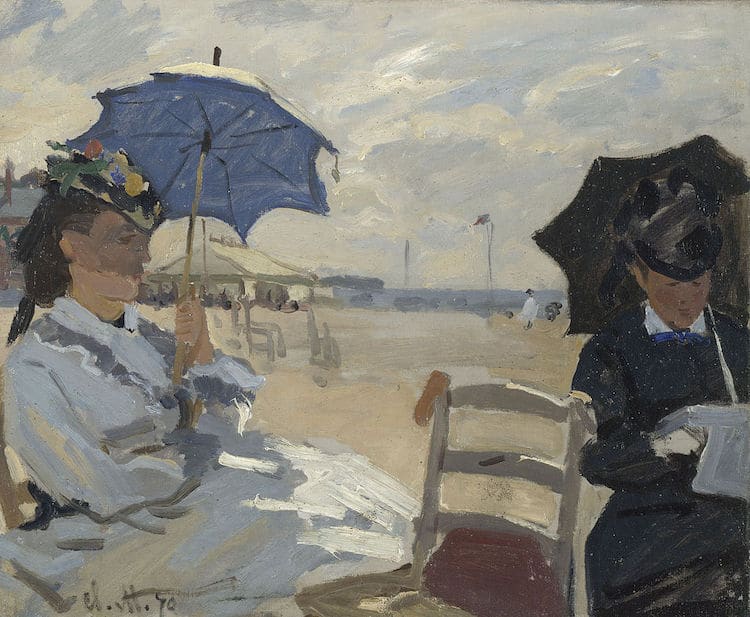
“The Beach at Trouville” by Claude Monet, 1870 (Photo: Wikimedia Commons, Public Domain)
Nature has always been a source of inspiration for artists, but the beach is a particularly recurrent theme throughout art history. The French Impressionists of the 19th century were famous for taking their easel and paints outdoors to paint en plein air, but the artists that came after them continued to depict natural environments outside of their studio.
Many would agree that a day at the beach is a day well spent, and these paintings show how people around the world have been drawn to the ocean for centuries. From the sunny beaches of France to the windy shores of England—and even the tropical sands of Tahiti—these famous artworks capture the colors, light, and atmosphere of playful, tranquil days at the beach. Discover the seaside-inspired paintings of Claude Monet, Edgar Degas, Mary Cassatt, and more, below.
Discover five famous beach paintings from art history.
Children Playing on the Beach by Mary Cassatt, 1884
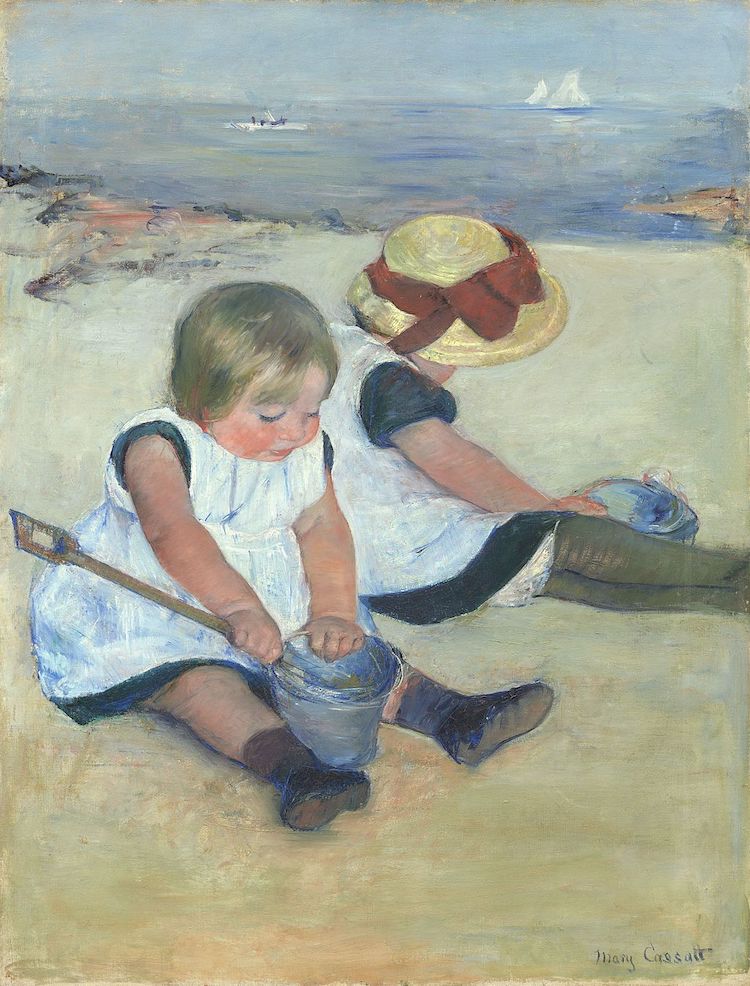
“Children Playing On The Beach” by Mary Cassatt, 1884 (Photo: Wikimedia Commons, Public Domain)
Mary Cassatt was an American painter best known for her depictions of mothers and babies. This painting demonstrates her skill in capturing the natural, tender moments of children. It depicts two girls dressed in white pinafores digging in the sand. They’re both engrossed in the activity, appearing totally content and unaware of the viewer. Cassatt rarely painted beaches, but her rendering of the coastal setting perfectly captures the sunlit, spontaneous moment.
Beach Scene by Edgar Degas, 1877
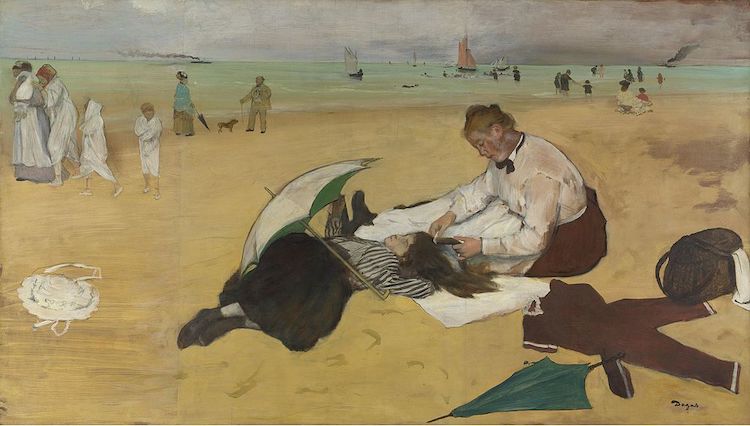
“Beach Scene” by Edgar Degas, 1877 (Photo: Wikimedia Commons, Public Domain)
Unlike his contemporaries who often painted en plein air, French Impressionist artist Edgar Degas is believed to have staged this outdoor scene inside his studio. Beach Scene is one of four artworks he painted that depict the beaches of Northern France. Degas was a great admirer of Japanese prints, and some historians believe the art form influenced this artwork. In the center of the scene, a maid combs the hair of a young girl—a narrative that is featured in Japanese prints.
Camille on the Beach at Trouville by Claude Monet, 1870

“Camille on the Beach at Trouville” by Claude Monet, 1870 (Photo: Wikimedia Commons, Public Domain)
Camille on the Beach at Trouville depicts Claude Monet’s first wife, Camille, at the shore. It is one of a series of beach paintings by the French Impressionist, and it shows the artist’s outstanding ability to capture light and movement using paint. Rendered in Monet’s signature short brushstrokes, the painting transports the viewer to the blustery day in 1870 Normandy. You can almost sense the wind, crashing waves, and salty air.
Tahitian Women on the Beach by Paul Gauguin, 1891
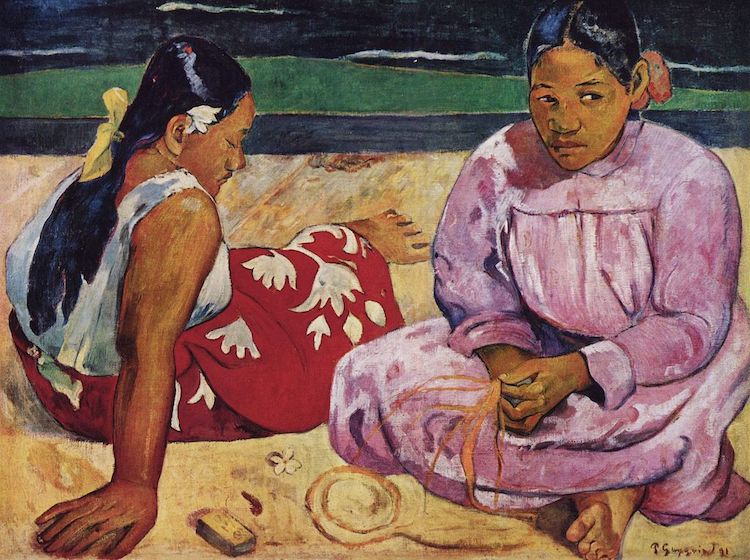
“Tahitian Women on the Beach” by Paul Gauguin, 1891 (Photo: Wikimedia Commons, Public Domain)
In a bid to escape “modern” society in France, French artist Paul Gauguin went to Tahiti in 1891 to discover the Polynesian lifestyle. The landscape, its people, and their lives under colonization became the subjects of his art for several years, particularly the native women. Tahitian Women on the Beach was painted in the summer of his first year there. It depicts two women sitting in the sand, one wearing traditional pareo sarong, while the other wears a Western-style scarf tied around her body. The subject on the left wears a yellow ribbon in her hair, again illustrating the Western influence on Tahitian culture during that time.
The New Moon by William Turner, 1840
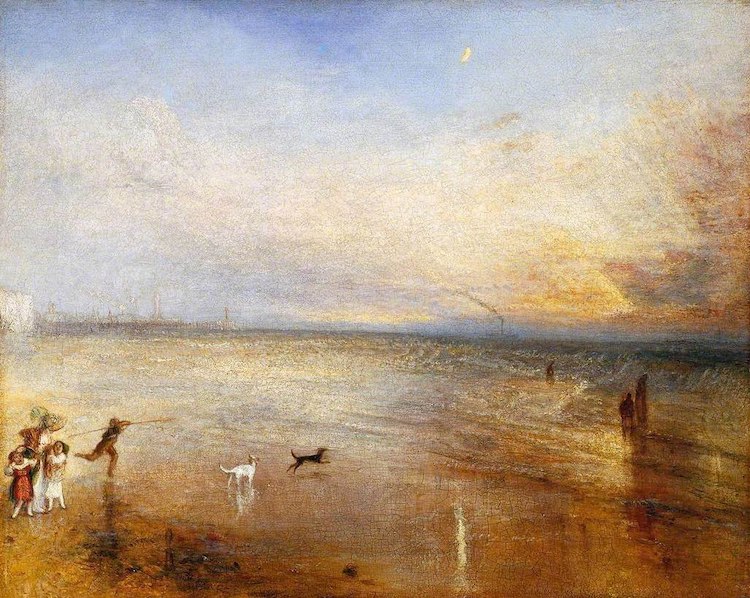
“The New Moon” by William Turner, 1840 (Photo: Wikimedia Commons, Public Domain)
English Romantic painter Joseph Mallord William Turner is known for his atmospheric landscapes paintings which illustrate 19th-century life. He was particularly keen on painting seascapes, and he always worked outside, quickly sketching and painting the scene in front of him. The New Moon—also known as, “I’ve lost My Boat, You shan’t have Your Hoop”—depicts his view of the Kent coast at Margate, a place Turner often stayed in his later years. The delicate, hazy scene shows kids and dogs playing on the shore, revealing the famously solitary artist’s fondness for children.
Related Articles:
Artist’s Textured Oil Paintings Perfectly Capture a Relaxing Day at the Beach
Sculptural Palette Knife Paintings Capture the Striking Beauty of California Beaches
Pastel Artist Captures America’s Most Beautiful Landscapes en Plein Air
Here’s Everything You’ll Need to Start Painting “en Plein Air” This Spring






















































































